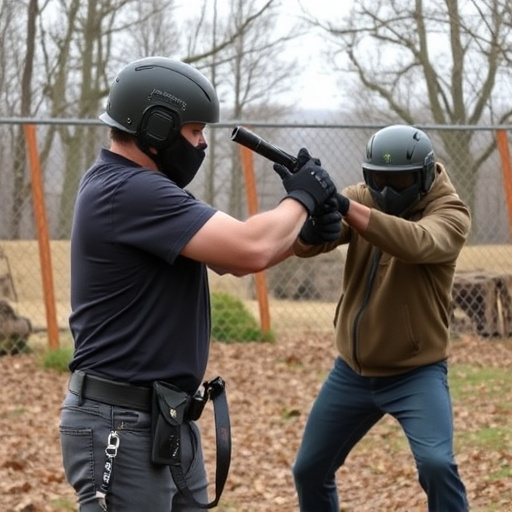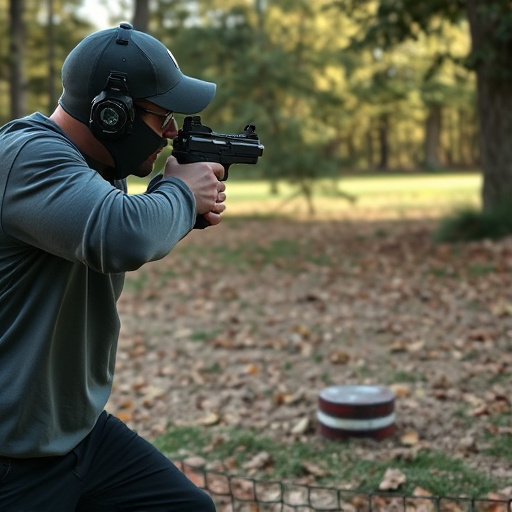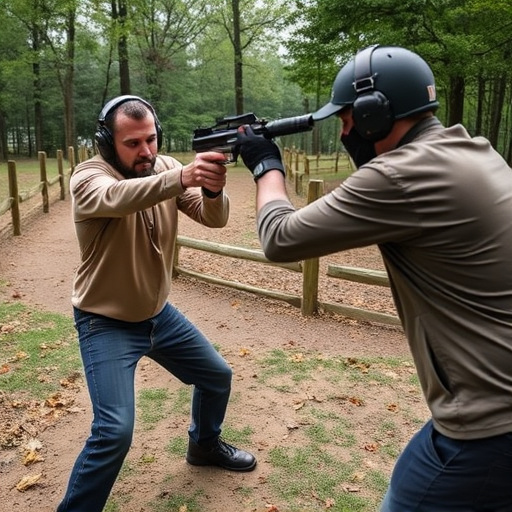Stun Gun Specifications: Safety, Science & Legal Insights for Effective Nervous System Disruption
Stun guns, designed for non-lethal self-defense, disable assailants through electrical shocks that d…….
Stun guns, designed for non-lethal self-defense, disable assailants through electrical shocks that disrupt the nervous system's functionality. Targeting specific neural pathways responsible for motor control, these devices induce strong muscle spasms and disorientation, temporarily immobilizing the target for several seconds to a few minutes. Understanding how stun guns affect the nervous system is crucial for their effective use as self-defense tools, highlighting key technical specifications like voltage output, pulse width duration, and energy delivery mechanisms. Safe handling, proper training, knowledge of local laws, and careful selection based on personal needs are essential when considering stun guns for self-protection.
“In today’s world, personal safety is a top concern. Non-lethal self-protection devices, such as stun guns, offer a powerful yet safe alternative for deterring potential threats. This comprehensive guide explores the intricate details behind these innovative tools. From understanding their effects on the nervous system to delving into key specifications, legalities, and training, we dissect what makes a stun gun an effective self-defense mechanism. Discover crucial factors to consider when choosing the right device, ensuring you’re prepared and confident in any situation.”
- Understanding Non-Lethal Self-Protection Devices
- The Science Behind Stun Guns and Their Effects
- Key Specifications for Effective Nervous System Disruption
- Safety Features and User Training
- Legal Considerations and Regulations
- Choosing the Right Stun Gun: Factors to Consider
Understanding Non-Lethal Self-Protection Devices

Non-lethal self-protection devices, such as stun guns, are designed to incapacitate an assailant without causing permanent or life-threatening injury. These tools operate on the principle of disrupting the nervous system’s functionality through various means, including electrical shocks. The most common mechanism involves delivering a high-voltage, low-current electric pulse that interferes with muscle control and balance, rendering the target temporarily immobilized.
Stun guns work by targeting specific neural pathways in the body, specifically those responsible for motor control. This interruption causes a strong muscle spasm and disorientation, making it difficult for the individual to move or fight back. The effects are generally temporary, lasting from several seconds to a few minutes, allowing the user to escape or disable the assailant until emergency services arrive. Understanding the stun gun’s impact on the nervous system is crucial in appreciating its effectiveness as a non-lethal self-defense option.
The Science Behind Stun Guns and Their Effects

Stun guns, also known as electroshock weapons, work by delivering a powerful electric shock to incapacitate an attacker. The science behind their effectiveness lies in targeting the nervous system. When activated, the device emits a high-voltage, low-amperage electrical pulse that disrupts the electrical signals transmitted by the body’s nerves and muscles. This disruption leads to temporary muscle paralysis and disorientation, allowing the user to escape or gain time for further defense.
The stun gun’s effect on the nervous system is swift but non-lethal. It overloads nerve cells with electricity, causing them to fire randomly and send conflicting signals to the muscles. This results in a loss of balance, coordination, and control over voluntary movements. The shock typically lasts for a few seconds, during which time the targeted individual becomes temporarily incapacitated. While it can cause significant discomfort and prevent an assailant from continuing an attack, it does not result in permanent damage or pose a risk of death under normal circumstances of use.
Key Specifications for Effective Nervous System Disruption

The effectiveness of a non-lethal self-protection device, such as a stun gun, relies heavily on its ability to disrupt the nervous system. Key specifications for achieving this include voltage and current output, pulse width, and energy delivery mechanism. A stun gun’s high voltage (typically between 50,000 to 150,000 volts) is designed to cause a strong electric shock, temporarily paralyzing muscles and overwhelming the nervous system. This results in a loss of balance and coordination, enabling the user to escape potentially dangerous situations.
Furthermore, the pulse width – the duration for which the voltage is delivered – plays a crucial role. Narrow pulses can increase the intensity of the shock, while broader pulses might reduce it. Energy delivery mechanisms also vary, with some stun guns using metal probes or contact pads to conduct electricity. Probes offer targeted disruption but require direct contact, while contact pads facilitate wider area coverage but may deliver less focused shocks. Users should consider these specifications to ensure the device meets their specific needs for nervous system disruption in self-defense scenarios.
Safety Features and User Training

When considering non-lethal self-protection devices, safety features are paramount. One such device, the stun gun, operates by delivering a powerful electric shock that temporarily disables an attacker through a series of intense pulses targeting the nervous system. This disruption prevents muscles from functioning properly, causing the target to fall to the ground and become temporarily incapacitated.
Effective user training is crucial for ensuring safe and responsible use of these devices. Learn proper handling techniques including grip placement and trigger control. Understand the stun gun’s range and activation mechanisms, as well as the legal implications of its use in your area. Regular practice sessions will help familiarize yourself with the device’s response times and allow you to react calmly under pressure.
Legal Considerations and Regulations

When considering non-lethal self-protection devices, it’s crucial to understand the legal landscape surrounding their use. The regulations vary greatly from one jurisdiction to another, with some regions permitting specific types of non-deadly force while others have stringent controls or outright bans. For instance, stun guns, a popular choice for personal safety, operate by delivering an electric shock that temporarily disables an assailant through disruption of the nervous system. However, the intensity and duration of these shocks are subject to legal scrutiny.
In many countries, stun devices must comply with certain specifications, such as voltage output limits and safe operating procedures, to ensure they don’t cause excessive harm or unintended injury. Law enforcement agencies often have specific guidelines for civilians using non-lethal force, including training requirements and restrictions on when and where these devices can be carried legally. Understanding local laws is essential for responsible self-defense, ensuring compliance, and avoiding potential legal repercussions.
Choosing the Right Stun Gun: Factors to Consider

When selecting a stun gun for self-protection, understanding its effects on the nervous system is paramount. Stun guns work by delivering an electric shock that interrupts muscle control and can temporarily disable an attacker. The intensity of this shock should be sufficient to cause pain, disorientation, and even temporary paralysis, giving you precious time to escape. Look for devices with adjustable voltage settings, as this allows you to choose the level of impact needed based on situations and personal comfort levels without causing permanent harm.
Several factors influence the choice of the right stun gun. Consider the device’s range: how close you need to be to your attacker for it to be effective. Weight and size are also important, as a lighter, compact stun gun is easier to carry discreetly. Additionally, consider the charging type, battery life, and any additional features like LED flashlights or alarm systems that enhance its functionality. Always opt for reputable brands known for their quality and safety standards, ensuring you get a reliable tool for personal protection.
Non-lethal self-protection devices, particularly stun guns, have evolved to offer effective nervous system disruption through targeted electrical impulses. Understanding their science and key specifications, coupled with proper safety features and user training, is essential for optimal effectiveness. When choosing a stun gun, consider factors like voltage, amperage, reach, and durability, while also staying informed about local legal considerations and regulations regarding their use. By selecting the right device and utilizing it responsibly, individuals can empower themselves with a reliable means of personal safety.


